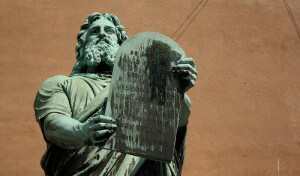Religious Displays on Public Property
January 7th, 2015
This time of year news articles and blogs from all around the nation are filled with stories of the controversy over whether religious displays can be on public property. Holiday displays with religious symbolism are at the center of these debates. Universal Life Church takes an interest in the constitutional debate over separation of church and state and freedom of religious expression. 
Separation of Church and State
The phrase “separation of church and state” is not found in the Constitution of the United State. It was however a phrase used by Thomas Jefferson when speaking of the Establishment Clause and the Free Exercise Clause of the First Amendment. The First Amendment of the Constitution states, “Congress shall make no law respecting an establishment of religion, or prohibit the free exercise thereof….”
Establishment Clause
In 1970, the Supreme Court of the United States created a three-prong test called the Lemon Test for deciding whether the government has violated the Establishment Clause. In Lemon v. Kurtzman, the court ruled that a statute must not result in excessive government entanglement with religious affairs, a statute must not advance or inhibit religious affairs, and a statute must be a secular legislative purpose. In 1984, in Lynch v. Donnelly Supreme Court Justice Sandra Day O’Connor ruled that the government violated the establishment clause if the government’s actions create a perception in the mind of a reasonable observer that the government is either endorsing or disapproving the religion. O’Connor’s ruling has been named both the “endorsement test” or the “reindeer rule.” The public holiday display in Lynch was ruled to be an “indirect, remote, and incidental” benefit to religion if any. In County of Allegheny v. American Civil Liberties Union, Greater Pittsburgh, however, the court struck down the use of a holiday display where it was in a prominent position in a county courthouse and had the words “Gloria in Excelsis Deo.” In the same decision the court ruled that a joint Menorah Christmas tree did not violate the establishment clause. In 2005, two cases were heard involving the Ten Commandments. The courts split and in Van Orden v. Perry the court ruled that the display did not violate the establishment clause because it had a secular purpose, but in McCreary County v. ACLU of Kentucky the display was found to not be clearly integrated with a secular purpose.
More recently a religious display of an angel falling into the flames of hell was approved in the Florida state capitol when the display’s sponsor, the American United for Separation of Church and State, threatened to sue. In Ohio, however, a man was ordered to remove a zombie-themed nativity scene when the zoning commission deemed it too big for the man’s yard.
Religious and non-religious groups will continue to clash over the right to display or not display religious holiday displays on government property. The battle between separation of church and state and religious freedom continues and will for years to come. Universal Life Church Case Law will continue to follow the constitutional debate.
Photo Credit: blondinrikard via Compfight cc


